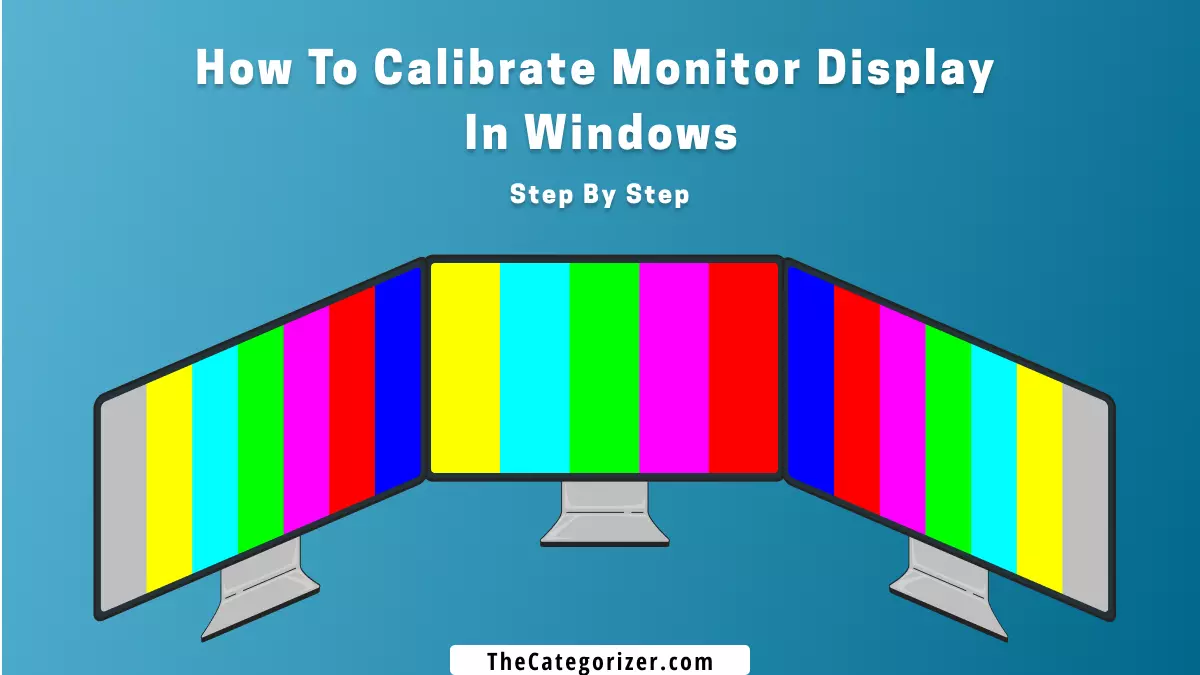Overview – Calibrate Monitor in Windows
You may have noticed some glaring inconsistencies on your screen while watching a movie or playing a game. Depending on the color and contrast ratio of your monitor, you are finding certain displays excessively bright or just too dim.
By the end of this article, you’ll be able to fix the color, contrast, and brightness issues in the display and calibrate your monitor properly for better display, color accuracy, and contrast ratio using the built-in Windows Calibration Tool.
How To Calibrate Monitor in Windows 11
Step #1: Type and open “Calibrate display color” from the Start Menu.
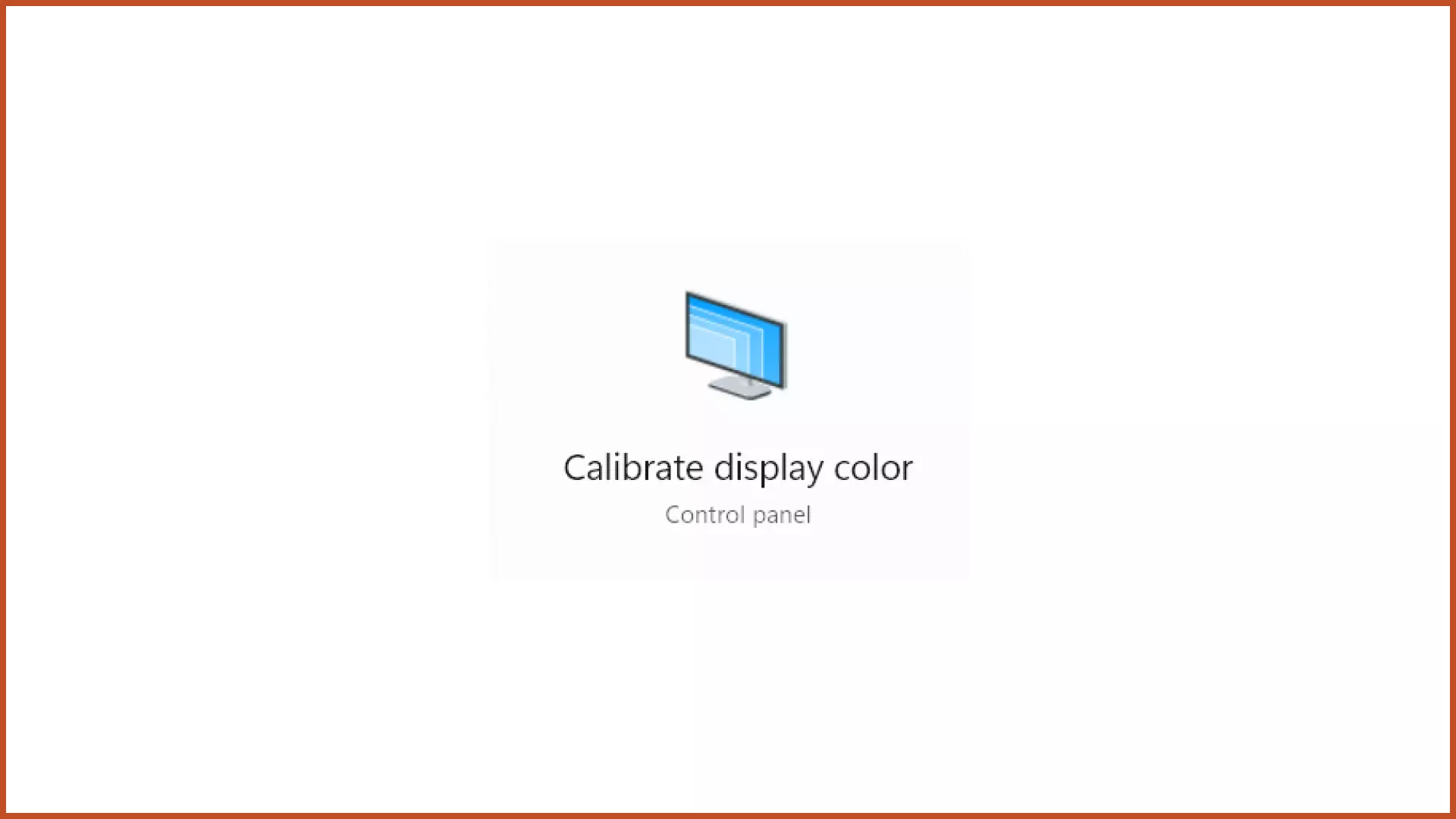
Step #2: Press the ‘Next’ button to begin the monitor calibration.
Note: If you’re using a Multi-Monitor Setup on your device, simply drag the Calibration Tool to the monitor which you want to calibrate and press the ‘Calibrate New Display’ button.
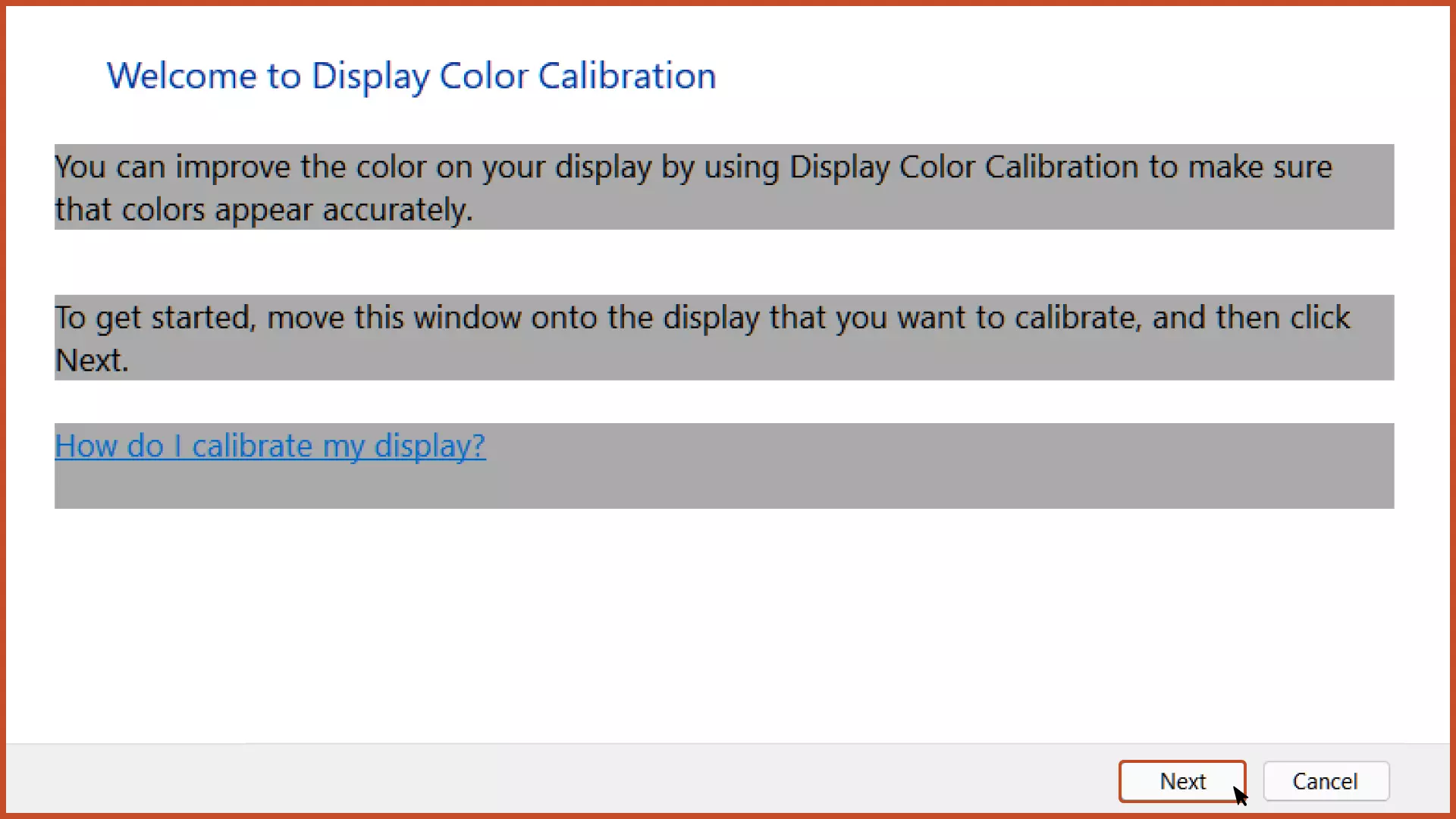
Step #3: Now comes the part of adjusting Gamma Rays on your monitor. Technically, this part is called Gamma Correction and it’s responsible for controlling the overall brightness of the graphics rendered on the monitor.
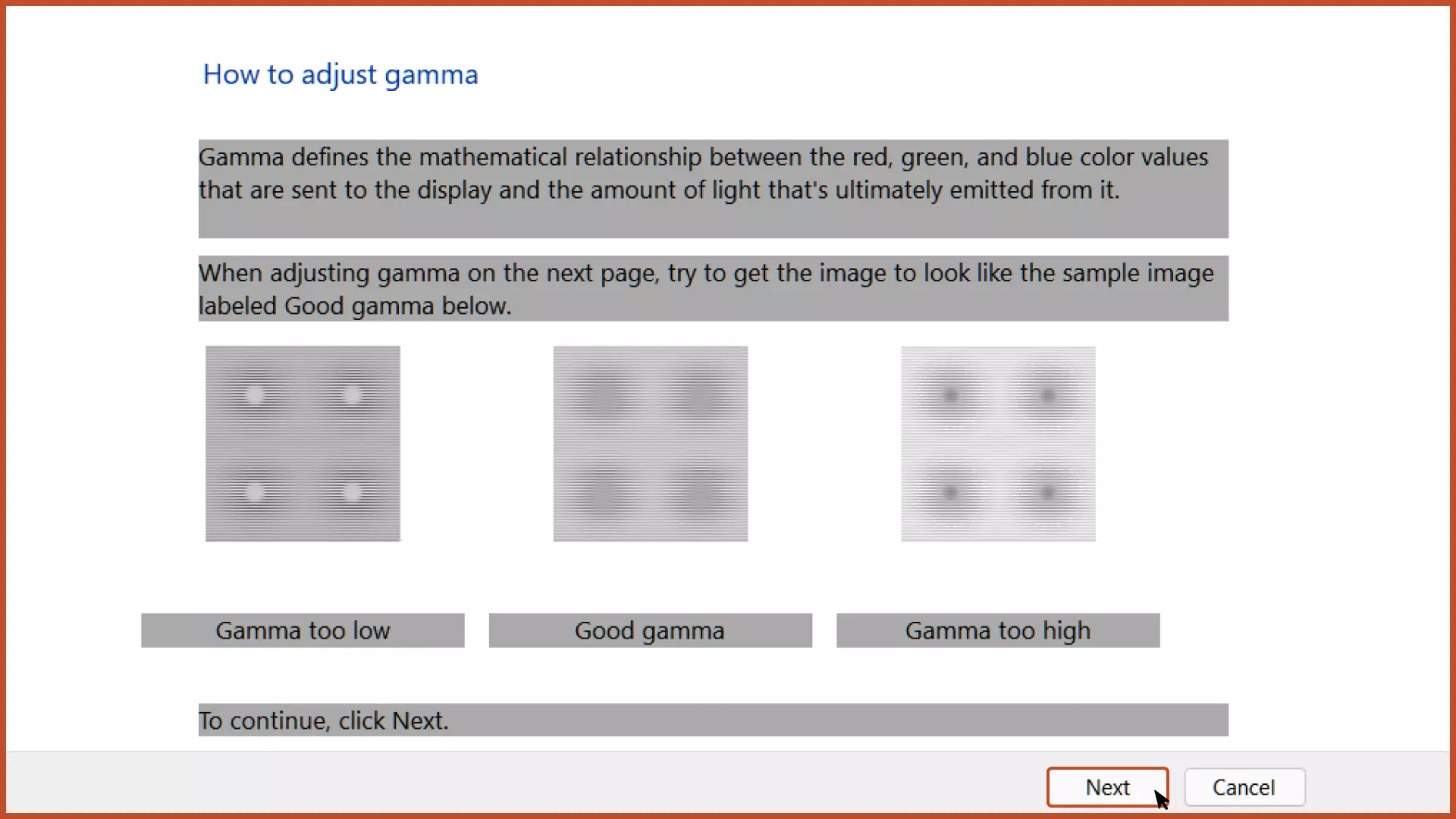
To Adjust the gamma rays in the monitor, drag the Gamma Rays slider to adjust it in your monitor. Drag the slider upward to raise gamma, and downward to decrease gamma.
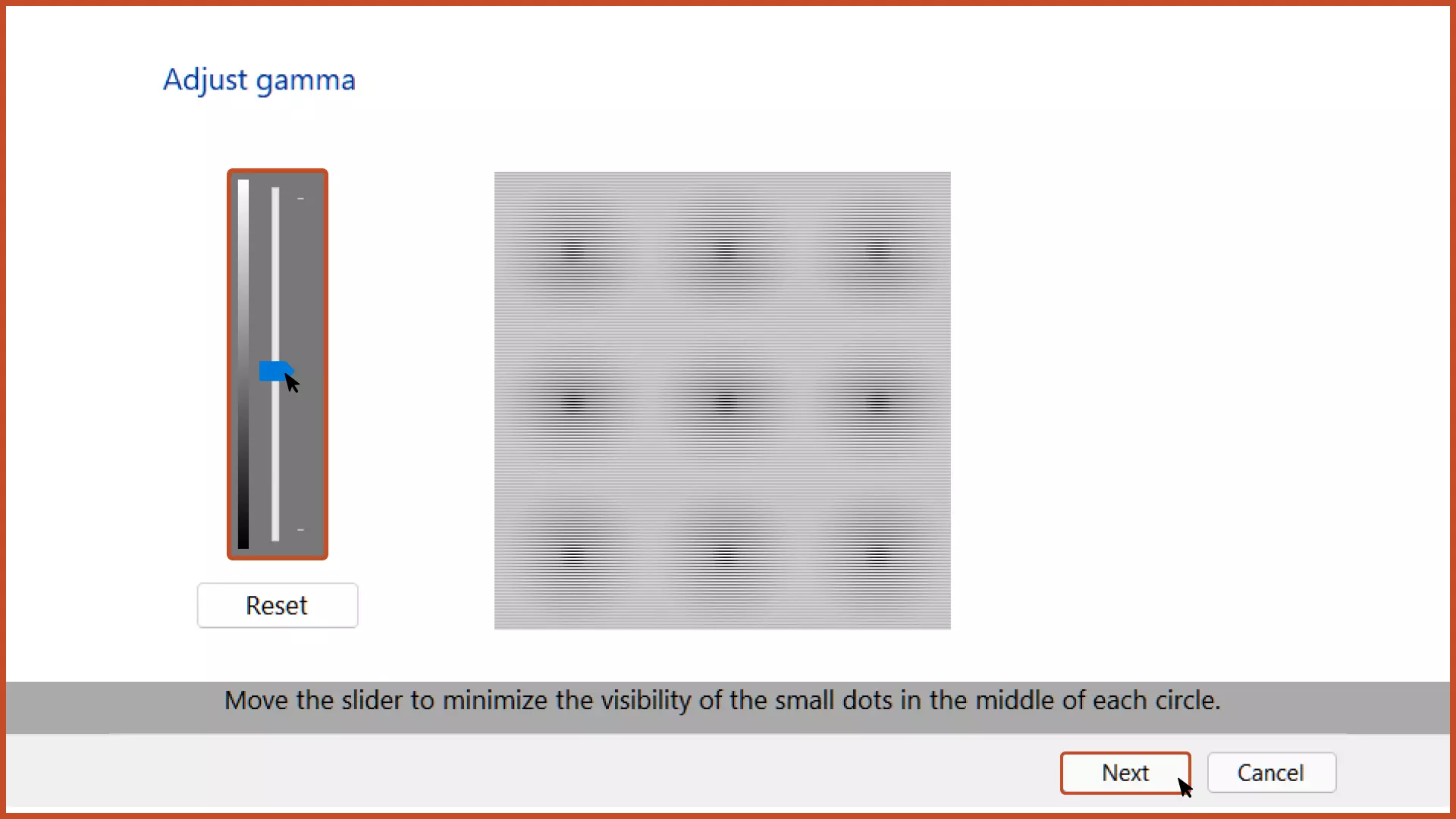
Step #4: Now, we’ll modify the brightness of the display by adjusting the pixel intensity of graphics rendered on the monitor.

To adjust the brightness level properly, increase or decrease the screen’s brightness in such a way that you can distinguish the shirt from the ‘X’ letter in the background, in the image below.

Step #5: Let’s cover the contrast adjustment section, where we’ll compare and modify the intensity of the brightest white and the darkest black color that your monitor can display.

Compare the contrast of the image below to the image above, if the image displayed by your monitor seems fine, simply skip this part otherwise adjust the contrast of your monitor.

Step #6: Now, last but not the least, comes the part of color balancing. It is the global adjustment of RGB (Red, Green, Blue) colors in the display.

To adjust the color balance, drag the RGB sliders. To increase a specific color, drag its slider to the right.

Step #7: Click the ‘current calibration’ and press the ‘Finish’ button to save the new display calibration in Windows.

Conclusion
We’ve covered how to calibrate the monitor in Windows 11.
You have to manually perform all the steps and re-calibrate the gamma, brightness, RGB values, and contrast depending on your monitor’s hardware and your vision.
In this article, the settings are bound to Windows 11 but will work with some older versions including Windows 10.
Related Articles
Increase Monitor Refresh Rate in Windows
Increase the monitor refresh rate and fully utilize the system resources.
Hide the Taskbar in Windows
Increase the size of your display by increasing some pixels by hiding the taskbar in Windows when not in use.
Dual Monitor Setup in Windows 11
Setup dual display and improve your productivity.

